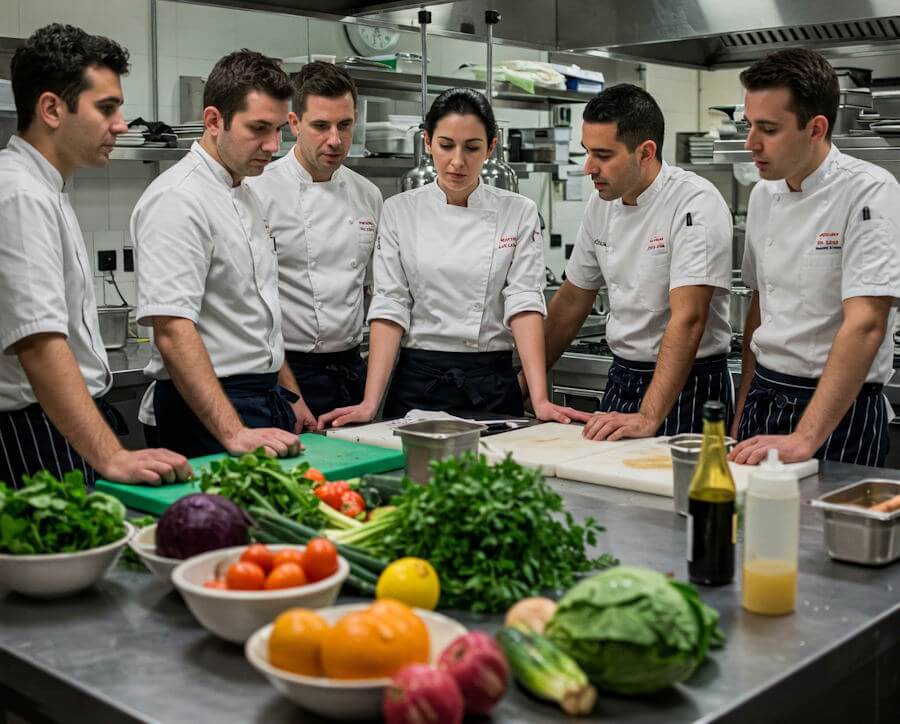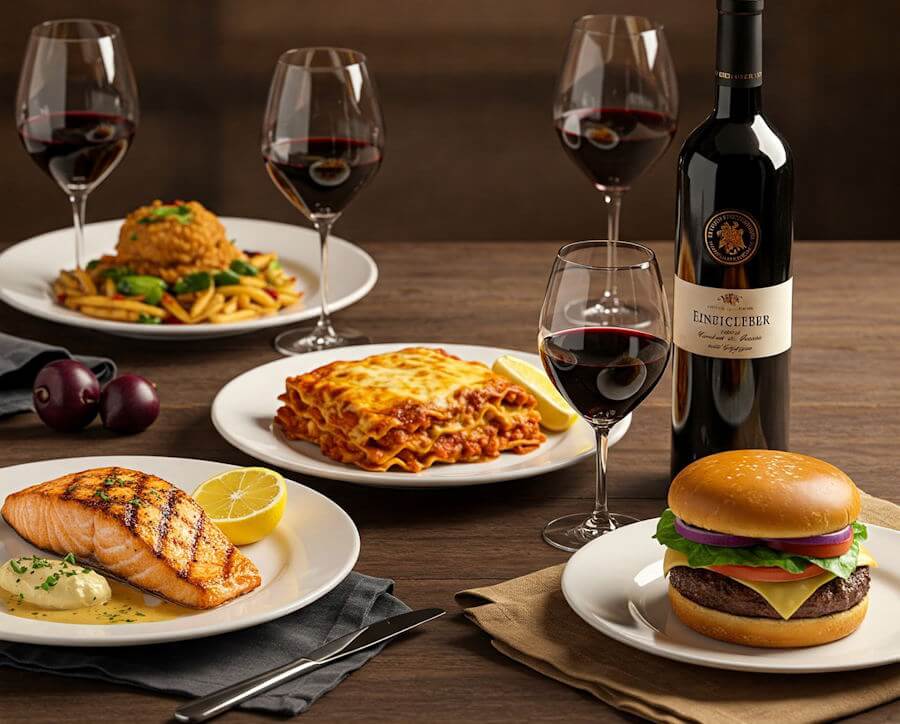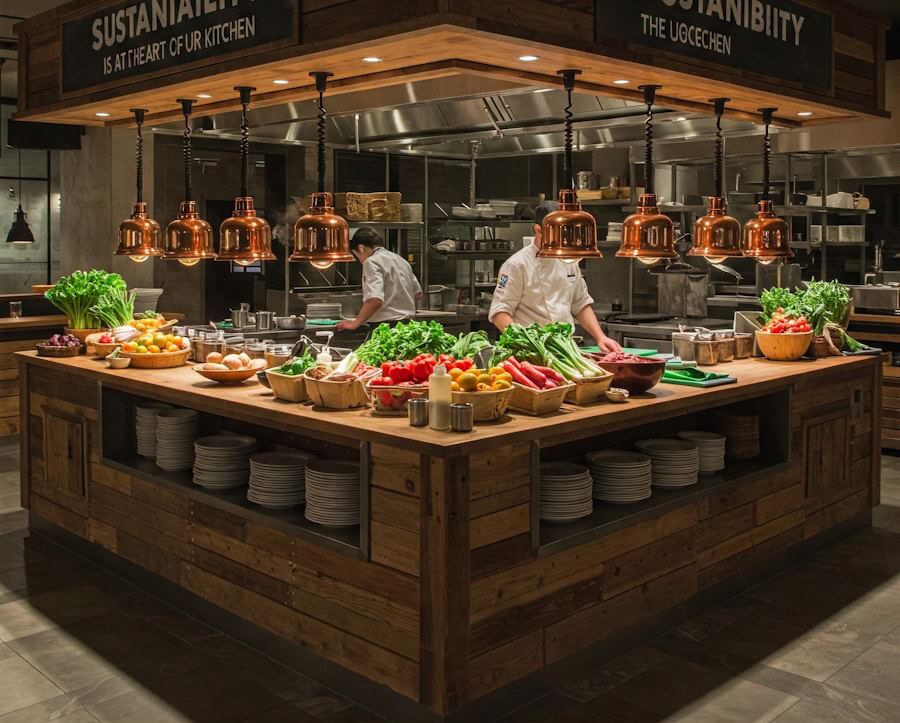Introduction to Seasonal Menus
Seasonal menus are an integral aspect of contemporary culinary practices, emphasizing the importance of utilizing ingredients that are at their peak during specific times of the year. This approach not only ensures a higher quality of ingredients but also aligns with sustainable practices that benefit both the environment and local economies. By designing a menu that reflects the seasons, chefs can take advantage of the optimal flavors and nutrients provided by fresh produce, leading to a more vibrant and enjoyable dining experience.
The incorporation of seasonal ingredients supports the local agricultural community, as restaurants can forge partnerships with nearby farms. This relationship not only fosters sustainability but also reduces the carbon footprint associated with food transportation. Consequently, diners can appreciate the connection between their meals and the land, reinforcing the idea of consuming food that is both environmentally conscious and culturally relevant. Seasonal menus advocate for a return to traditional eating patterns that celebrate local and seasonal offerings, allowing chefs to craft dishes that tell a story of the region’s bounty.
Moreover, using seasonal ingredients enhances the overall dining experience as it provides variety and excitement. Diners are encouraged to explore new tastes and textures that may not be available year-round. Each season brings unique flavors, from the crisp, refreshing produce of spring to the hearty, robust ingredients of winter. Chefs can create menus that reflect these changes, enticing customers to return frequently to discover what culinary delights await them. As such, seasonal menus become not only a way to serve food but also an opportunity to engage diners in the story of food production and seasonal change.
Inspiration for Seasonal Dishes
The creation of a seasonal menu is both an art and a science, guided by a multitude of influences. At the heart of our culinary team’s inspiration lies the availability of local produce. We strive to incorporate fresh, sustainably sourced ingredients that reflect the harvest cycle in our region. This ensures that every dish not only celebrates the flavors of the season but also supports local farmers and promotes environmentally friendly practices. For instance, during the peak of summer, vibrant tomatoes, zucchinis, and berries become staples in our kitchen, allowing chefs to craft unique recipes that highlight their natural flavors.
Cultural influences also play a significant role in shaping our seasonal dishes. Our culinary team embraces the diverse backgrounds and experiences of chefs from various cultural traditions. They draw upon their heritages to bring a unique flair to classic dishes. For example, a chef might craft a summer salad incorporating Mediterranean techniques while using local greens and herbs. This fusion not only creates excitement on the plate but also encourages diners to explore a global palette. Such personal anecdotes often enrich the narrative behind each dish, making it not just a meal but a story of connection and heritage.
Furthermore, staying attuned to culinary trends enables our team to continually innovate and stay relevant in the dining landscape. Influences from food media, culinary events, and the evolving tastes of our patrons help to mold our interpretations of seasonal cuisine. Trends in plant-based cooking or fermentation techniques can inspire new recipes, allowing us to creatively reimagine traditional dishes. The synergy of local ingredients, cultural narratives, and contemporary trends culminates in a seasonal menu that is both reflective and progressive, inviting guests to enjoy a memorable dining experience.
Ingredient Sourcing and Collaboration
At the core of our seasonal menu lies a meticulous ingredient sourcing process that emphasizes quality, sustainability, and collaboration with local farmers and suppliers. Our commitment to using fresh, seasonal produce not only enhances the flavor of our dishes but also supports the local agricultural ecosystem. We believe that by sourcing ingredients from local farmers, we are not only investing in our community but also ensuring that our culinary creations showcase the best flavors of the region.
To kick off the ingredient sourcing process, our team regularly visits local markets and farms, fostering direct relationships with farmers who share our passion for sustainable practices. During these visits, we engage in discussions about their growing methods, crop rotation, and seasonal availability, allowing us to select the most suitable produce for our seasonal menu. This direct connection not only guarantees the freshness of the ingredients but also strengthens our commitment to reducing our carbon footprint by minimizing transportation distances.
Another vital aspect of our sourcing strategy is the emphasis on sustainable farming practices. We prioritize collaboration with farmers who employ organic or regenerative methods, contributing to soil health and biodiversity. This approach not only benefits the environment but also results in ingredients that are better for our health—free from harmful pesticides and chemical additives. Moreover, by supporting farmers who prioritize sustainability, we encourage responsible agricultural practices that can positively impact future generations.
In this way, our ingredient sourcing process intertwines with our values of quality, community support, and environmental stewardship. The collaborative relationships we build with local farmers and suppliers enable us to craft a seasonal menu that reflects the hard work and dedication of those who cultivate the ingredients we serve, ultimately creating a richer dining experience for our patrons.
Testing and Tasting New Recipes
The experimentation phase is an essential component in designing our seasonal menu, as it involves rigorous testing and tasting of potential new recipes. Our chefs invest considerable time and creativity to develop dishes that not only reflect the changing seasons but also appeal to diverse palates. The journey often begins with brainstorming sessions, where culinary concepts are generated based on seasonal ingredients, flavor profiles, and current food trends.
Once preliminary ideas take shape, the chefs move to the kitchen for the critical phase of recipe development. Here, they prepare dishes using high-quality, fresh seasonal ingredients, focusing on flavor balance and presentation. The initial cooking sessions may yield several variations of a dish, as chefs explore different methods, seasoning combinations, and cooking techniques. This iterative process is crucial, as it allows for the continual refinement of each recipe.
Following the preparation of these new creations, a tasting process is held, involving members of our culinary team and often some select staff from other departments. Participants offer feedback based on taste, texture, and visual appeal. The tasting sessions are not merely subjective; they also foster a collaborative environment where diverse opinions and insights contribute to the enhancement of each dish. Essential to this phase is the collection of constructive criticism, which guides our chefs in making adjustments to refine flavors and ensure that each dish is not only delectable but also meets the high standards expected for our seasonal menu.
This feedback loop is instrumental for our culinary team. With a clear understanding of what works and what doesn’t, adjustments are made to enhance the balance of flavors, presentation, and overall experience. Through dedication to this testing and tasting methodology, we strive to create an engaging and exciting seasonal menu that captivates guests and encourages them to explore the rich tastes of each season.
Creating a Cohesive Menu Theme
Designing a seasonal menu requires a concerted effort from our culinary team to create a cohesive theme that reflects both the season and the unique culinary experience we aim to deliver. The process begins with deciding on an overall style of cuisine that aligns with the time of year. For instance, during the autumn months, our focus may shift towards hearty, comforting dishes that incorporate seasonal vegetables, such as squash, root vegetables, and robust grains.
Pairing complementary flavors plays a crucial role in achieving a harmonious menu. Our chefs meticulously consider how different ingredients interact with one another—selecting flavors that enhance the overall dining experience. For example, a dish featuring roasted root vegetables might be paired with a tangy, herb-infused yogurt sauce to provide contrast and depth. This attention to flavor harmony helps create a pleasant, multi-dimensional dining experience that engages the palate and encourages exploration of various dishes.
Moreover, balancing diverse dietary preferences is critical in creating a well-rounded menu. As contemporary diners have an array of dietary restrictions and preferences, such as vegetarian, vegan, gluten-free, or nut-free options, we strive to ensure that everyone can find delights suited to their needs. Special consideration is given to crafting inclusive dishes that do not compromise on flavor or originality, which helps to foster an inviting atmosphere in our establishment.
In summary, crafting a cohesive menu theme involves integrating seasonally inspired cuisine, pairing flavors thoughtfully, and ensuring diverse dietary needs are met. This holistic approach not only enhances the quality of the dining experience but also allows our guests to connect with the seasonal ingredients and culinary artistry on offer throughout the menu.
Visual Presentation of Dishes
In the realm of culinary artistry, the visual presentation of dishes serves as a vital component that significantly impacts the overall dining experience. A thoughtfully designed plate can transform a seasonal dish into an inviting masterpiece, captivating diners before they take their first bite. Plating techniques play a crucial role in elevating this artistic expression. From the careful arrangement of ingredients to the strategic use of negative space, each element contributes to creating a visually appealing composition.
Color combinations are another essential facet of dish presentation. A well-balanced palette not only enhances the visual appeal but also reflects the seasonal theme of the menu. Bright greens, rich reds, and earthy browns can evoke the essence of the harvest and resonate with diners on a sensory level. Utilizing complementary colors can also create a harmonious contrast, drawing attention to the main components of the dish while allowing the overall presentation to remain cohesive. The interplay of colors in food can be utilized to tell a story, as vibrancy often correlates with freshness and flavor.
The art of visual presentation extends beyond mere aesthetics; it engages the diner’s senses and elevates their anticipation. When dishes are presented thoughtfully, they invite exploration and appreciation, setting the stage for an enjoyable meal. Chefs often employ various garnishing techniques to add a touch of elegance and finesse, using edible flowers, drizzles, or microgreens that not only enhance appearance but also provide additional layers of flavor. Thoughtful visual presentation transforms a dish into an experience and reinforces the connection between food and art, ultimately enriching the diner’s journey through the ever-evolving seasonal menu.
Marketing and Launching the Seasonal Menu
The launch of our seasonal menu is a carefully orchestrated event that hinges on a blend of strategic marketing techniques. To ensure that our diverse and unique culinary offerings reach our target audience effectively, we initiate a multi-channel approach primarily centered around social media campaigns, promotional events, and strong engagement with our loyal customer base.
Social media serves as a crucial platform for generating buzz around the new seasonal menu. Through visually appealing posts, enticing stories, and targeted ads, we leverage platforms such as Instagram, Facebook, and Twitter to showcase the vibrant dishes that define the season’s theme. High-quality images combined with captivating descriptions create a sense of urgency and excitement. By using relevant hashtags, we enhance visibility and allow potential customers to discover our new offerings organically, fostering a broader audience engagement.
In addition to our online strategies, we organize promotional events to create tangible experiences for customers. These events, such as exclusive tasting nights and themed dinners, not only serve to attract customers but also build a community around our brand. Engaging influencers or local food bloggers for these events further amplifies our reach, as their endorsements can sway their followers’ preferences and attract new guests to experience the seasonal menu firsthand.
Equally important is our commitment to interaction with our loyal customer base. We encourage feedback and suggestions, often running polls and surveys to gauge their preferences regarding menu items. This engagement ensures our offerings resonate with our patrons’ tastes and fosters loyalty, as they feel a sense of ownership in the menu-making process. This strategy culminates in a well-rounded marketing effort that not only highlights the unique dishes but also nurtures a connection between our brand and the valued customers we serve.
Customer Feedback and Adjustments
The process of designing a seasonal menu is not solely reliant on culinary creativity; it is also heavily influenced by customer feedback. After launching a new menu, we make it a priority to gather input from our patrons. This feedback can be collected through various channels, such as in-person surveys, online forms, and social media platforms. By actively inviting our customers to share their experiences, we gain valuable insights into which dishes resonate with them and which may need refinement.
Analyzing customer feedback involves both qualitative and quantitative methods. We categorize responses based on common themes, such as taste, presentation, and overall satisfaction. For instance, if several customers express that a particular dish is overly spicy, we can consider adjusting its seasoning to better align with our guests’ preferences. Likewise, rave reviews for specific innovative combinations might prompt us to incorporate similar flavors into future offerings. This iterative process not only enhances the quality of our seasonal menu but also fosters a dynamic relationship with our clientele.
Conclusion and Looking Ahead
The journey of creating our seasonal menu has been a profound experience that has significantly enriched our restaurant’s identity. Each season brings a unique opportunity to experiment with vibrant and fresh ingredients, showcasing our commitment to quality and sustainability. This process not only allows us to present a diverse array of dishes that reflect the changing seasons but also fosters a deeper connection with our customers by offering flavors that resonate with their palates and experiences. The positive feedback we receive reinforces the importance of innovation in our culinary offerings.
Going forward, we remain dedicated to refining our approach to menu design. Future menu ideas will continue to emphasize seasonal ingredients while incorporating feedback from our patrons and the latest culinary trends. This adaptive strategy ensures that our menu remains engaging and relevant, which is essential in a competitive dining landscape. We will explore various culinary techniques and global influences that resonate with our local community, enhancing the dining experience for our guests.
Additionally, we aspire to foster creativity within our kitchen team by encouraging them to experiment with new recipes and presentation styles. The collaborative nature of our kitchen allows for a continuous exchange of ideas that drives our menu evolution. As we look ahead, we foresee the potential for themed tasting events, where seasonal menus can be spotlighted in a unique format, offering our guests an opportunity to experience a curated combination of dishes crafted around a central theme.
In conclusion, the design of our seasonal menu is not just a reflection of the ingredients available but a celebration of our culinary philosophy. As we embrace the journey of innovation and creativity, we invite our patrons to join us in this exciting exploration of flavors, textures, and stories that each season brings. Together, we look forward to a future filled with delicious offerings that continue to captivate and inspire.





